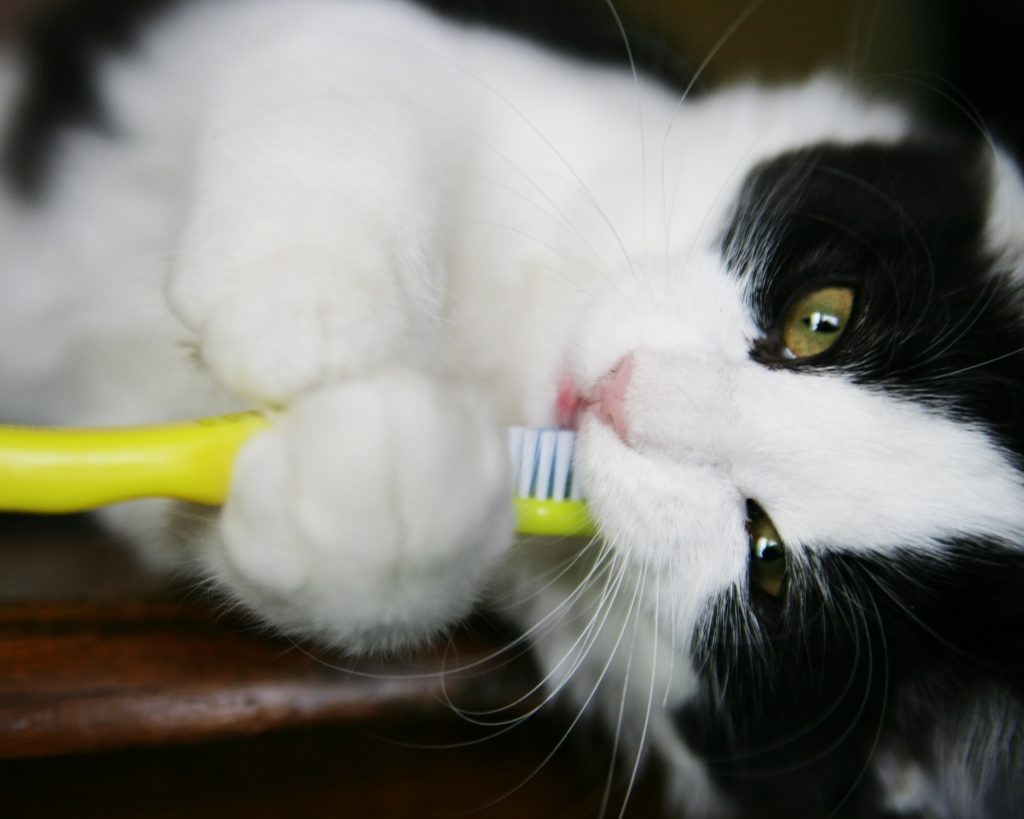
Those Pearly Whites: The Importance Of Pet Dental Care
 An estimated 95% of U.S. cats and dogs will need treatment for dental disease at some point in their lives, and your pet’s dental health has a significant impact on his or her wellness and longevity. We here at Arlington Animal Hospital are excited to help you learn about pet dental health and make a commitment to providing your pets with regular preventative care.
An estimated 95% of U.S. cats and dogs will need treatment for dental disease at some point in their lives, and your pet’s dental health has a significant impact on his or her wellness and longevity. We here at Arlington Animal Hospital are excited to help you learn about pet dental health and make a commitment to providing your pets with regular preventative care.
Pet Dental Disease 101
Dental disease, also known as periodontal disease, is an infection of the teeth, gums, and surrounding structures. Dental disease affects the majority of dogs and cats over age 3 and is one of the most common diseases seen and treated by veterinarians.
The symptoms of dental disease in pets include:
- Foul breath
- Discolored, broken, or loose teeth
- Excessive drooling
- Bleeding from the mouth
- Abnormal chewing, dropping food while eating
- Swelling of the areas surrounding the mouth
- Pawing at the mouth or other signs of pain
- Loss of appetite
Besides causing your pet significant pain, dental disease can have a deleterious effect on major organs such as the heart, lungs, and kidneys. Untreated dental disease has also been linked to diabetes and certain forms of cancer in pets.
The Benefits Of Veterinary Dental Care
The field of veterinary dentistry has come a long way in recent years, and our approach to treating the whole animal now includes the mouth, teeth, and gums. By bringing your pet in for regular wellness visits, you are giving us the chance to examine his or her mouth each time and to make recommendations as to home care and follow up professional care.
Arlington Animal Hospital is proud to offer top of the line, comprehensive veterinary dentistry services. Most pets will need a thorough cleaning and examination performed under general anesthesia at some point in their lives. The sedation allows your pet to remain still and safe while we perform these comprehensive procedures above and below the gum line.
Prevention Begins At Home
Can you imagine what your teeth would look and feel like if you never brushed them? Your dog or cat’s teeth are no different, and if you haven’t already included tooth brushing into your pet’s daily care regimen, the time to start is now.
Brushing your pet’s teeth on a regular basis in between dental cleanings is the single most effective thing you can do to keep your pet’s mouth healthy.
Brushing your pet’s teeth at home:
- Use a pet toothbrush, human toothbrush, finger brush, or a gauze-wrapped finger.
- Always use pet-safe toothpaste on your pet. Most human toothpastes contain ingredients that are toxic to pets. Give us a call for recommendations.
- If you’ve never brushed your pet’s teeth before, start out slowly by introducing a finger (dipping it in beef broth first helps) into your pet’s mouth, followed by lots of praise. Move on to a toothbrush once your pet is comfortable with finger brushing.
We are happy to answer any questions you may have regarding pet tooth brushing and other home dental care concerns
Dental disease in pets usually develops gradually; it’s easy to miss the signs until a bad infection or other problem pops up. Fortunately, with a good home care regimen and regular wellness exams, you can keep your pet healthy and pain free for many years to come.
Contact Us!
2301 Columbia Pike #G-1, Arlington, VA 22204
Phone: (703) 920-5300
Fax: (703) 685-8860
Email: info@myarlingtonvet.com
Office Hours
-
Monday
8 a.m. – 8 p.m.
-
Tuesday
8 a.m. – 8 p.m.
-
Wednesday
8 a.m. – 6 p.m.
-
Thursday
8 a.m. – 6 p.m.
-
Friday
8 a.m. – 6 p.m.
-
Saturday
8 a.m. – 2 p.m.
-
Sunday
CLOSED
- Doctors’ hours are by appointment only.



